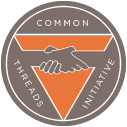 Happy New Year! From everyone on the Bovée-Thill team, we wish you a successful new term.
Happy New Year! From everyone on the Bovée-Thill team, we wish you a successful new term.
Looking at what lies ahead for business communication, this recent article in Workforce Magazine certainly caught our attention. The consulting firm MBO Partners predicts that over half the U.S. workforce will be independent by 2020. Reaching that threshold would require an increase from 16 million independent workers today to 70 million in just eight years, but even if the eventual growth falls short of that forecast, the rapid increase in unattached professionals is dramatically reshaping the nature of business—and business communication.
The sheer number is not the only important change going on here, either. In past years, corporate refugees made up an important share of the independent workforce. We know from our own experience that these people often benefited from the mentoring, formal training, "safe" learning opportunities, and professional networking that corporate structures can provide. When they went solo, they took these skills and connections with them.
However, with the spread of virtual organizations, the increase in freelance project work, and the weak employment market, we suspect that many workers will take—or be forced to take—the independent route without the broad skill sets that former corporate employees have.
Not only will more workers be operating outside a formal organization structure, in other words, but a significant number are likely to be fending for themselves without the benefit of much organizational communication experience at all.
Depending on how this scenario plays out in the coming years, the implications for business communication education could be profound. As freelance work has gone mainstream, from a relative rarity to an accepted career path to the very model on which some companies operate, the assumption that business communication takes place largely within a defined organizational context is becoming less and less valid.
Moreover, in this new world of work, business communication skills will become even more important than they are now. On the one hand, less-skilled communicators without the support of an organization to carry them along face a rough future as independents. Even experienced corporate pros can be shocked at the demands that suddenly being one's own salesforce puts on their persuasion and negotiation skills. Many freelancers are in nearly constant job-search mode, always scrambling for the next project and the next client.
On the other hand, skilled communicators can use their talents to land the most interesting and profitable projects and to build sustaining client relationships that ease the pressure of constantly needing to sell, sell, sell.
We've addressed virtual work and networked organizations in our textbooks for some time now, and we'll continue to adapt our coverage and content as the business landscape changes. In the meantime, we invite you to share your thoughts on how this seismic shift could change the practice and study of business communication.
One this is certain: The communication skills you are helping your students develop now are going to mean the difference between struggle, survival, and success in the future.
 From Black Friday to Small Business Saturday to Cyber Monday, business communication over the Thanksgiving holiday weekend is all about buy, buy, buy.
From Black Friday to Small Business Saturday to Cyber Monday, business communication over the Thanksgiving holiday weekend is all about buy, buy, buy. You know that feeling when the words don't quite capture the spirit of your intended message, but words are all you have?
You know that feeling when the words don't quite capture the spirit of your intended message, but words are all you have?





